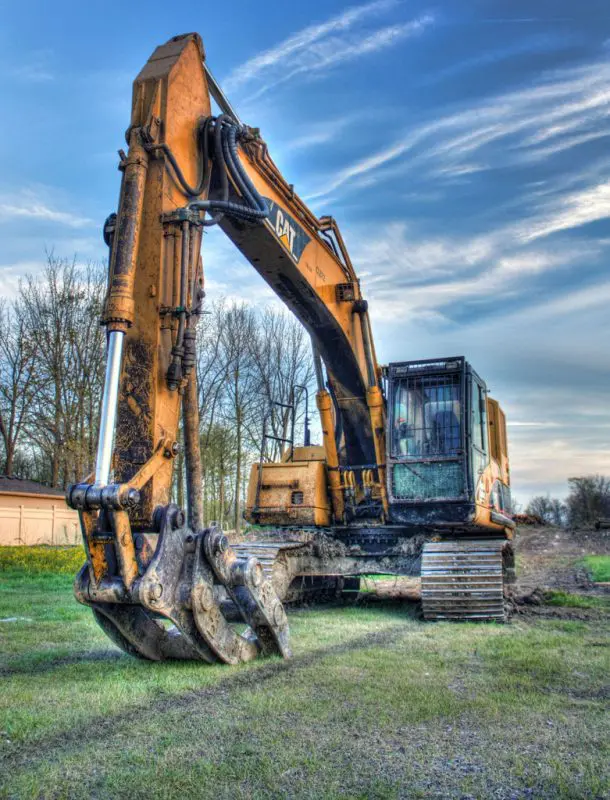Blog, Buildings, Carbon Footprint, Construction, Embodied Carbon, Energy, News, Sustainability
The Environmental Sustainability of Existing Buildings: Refurbish or Replace?
There comes a time in the life of every building where extensive refurbishment is required. For many a building this seems to bring with it thoughts of starting again – essentially to demolish and ‘rebuild’. The normal practice in modern times seems to be the preference to demolish and replace. Whereas conservationists naturally prefer to retain existing structures so to repair them and bring them back to their former glory. This latter approach retains the existing character and heritage of a building, but proponents of the ‘remove and replace’ philosophy ague about their reduced energy performance. They argue that bringing an asset back to its former glory is no longer good enough, and that they can’t be brought up to modern energy efficiency standards without being entirely replaced. But what does the environmental analysis actually tell us, does it support refurbishment, or does it support replacement? This article takes a look at this intriguing question.
Embodied carbon
To answer this fairly, the concept of embodied carbon needs to be introduced. Embodied carbon is the amount of carbon released during the production and processing of materials. It mainly comes from the consumption of fossil fuel energy throughout the production supply chain. It therefore considers consumption at all stages, such as material extraction, refining, transport, processing, assembly and fabrication activities. Embodied carbon is the carbon footprint of a material.
Historically the arguments around repair or replace have neglected this all too easily forgotten embodied carbon. However, it clearly must be considered. Whilst it is true that many older buildings cannot be refurbished to the same energy standards as modern construction the additional impact of new materials must be considered. Through retaining the existing structure the refurbishment requires less materials and therefore less embodied carbon. But is this enough of a carbon swing to sway in favour of refurbishment?
Whole life carbon – embodied and operational carbon
To answer this question correctly the embodied and operational carbon needs to be considered side by side, which is called the whole life carbon footprint. Let’s start by looking at embodied carbon. Embodied carbon is all too easily forgotten and is apparently concealed from our view. In fact, most people are unaware of the high environmental impact of making the products they consume.
The average new build house in the UK releases around 45 tonnes CO2e (carbon dioxide equivalent) in its construction. This is enough carbon to:
- Power a UK light bulb continuously for over 450 years; or to
- Power a TV for 2 hours a day for almost 1,440 years; or to
- Drive around the earth almost 10 times; or to
- Drive all the way to the moon.
This is just the embodied carbon to construct a single UK house, which are also amongst the smallest houses in Europe and around a third of the size of North American homes. The amounts are naturally more significant for non-domestic buildings and for larger domestic estates.
Operational carbon footprints of buildings
To place these figures into further perspective we need to compare them with the operational carbon of houses. The operational carbon of each house varies widely. However, the average UK household emits in the region of 3,300 kg of carbon dioxide to heat their home. This value includes space heating and hot water, but not the energy for lighting or appliances – which have their own embodied versus operational carbon balance. In contrast, the heating carbon of a new build UK house is around 2,000 kg of carbon dioxide per year. This means that rebuilding an average house into a new house could save about 1,300 kg of operational carbon each and every year. However, it comes at the expense of the additional embodied carbon emissions of the new construction.
To rebuild the house 45,000 kg of carbon dioxide is required. It therefore takes 34 years before the savings in operational carbon have matched the extra embodied carbon that has been spent to rebuild the house. This is particularly significant, because if you include the time to build the new house it will be around 2050 before the carbon starts to payback. The UK has legally binding targets to reduce its carbon emissions by 80% by 2050, from a 1990 baseline. Rebuilding the UK housing stock therefore doesn’t help us to meet these targets. Instead we must look to refurbishment to help with this challenging target.
Refurbishment of buildings
Unfortunately this is where our generic embodied carbon analysis must stop. Each refurbishment is entirely different and therefore each case needs to be assessed individually. The embodied carbon of the materials for a refurbishment needs to be compared with the additional operational carbon saving for the building under study, which would require a more detailed analysis than this mere blog. Each building also has a different energy use profile. This should be done on a case by case basis. However, the analysis above still shows how refurbishment is a promising option and that refurbished buildings do not necessarily need the same level of thermal performance to compete on a whole life carbon perspective.
There are of course many products that do not impact on the operational carbon of a building. The refurbishment of such materials and products typically brings with it a carbon benefit. By retaining existing materials there is an avoided need for new materials and products.
Reducing embodied carbon
When it comes to refurbishments and repairs there are some simple measures to be taken to reduce the embodied carbon footprint. One of the top wins is actually to reuse the materials, this can either be in the same project, or for use in another project. Reuse of materials can save up to 95% of the embodied carbon emissions of buying a new product. This is significant.
Beyond this there are savings to be made through material choices. One of the rules of thumb is timber first. Timber is a natural material that has a wide range of uses and has a relatively low environmental impact to produce. Therefore if timber materials and products are a realistic selection it’s usually a lower carbon option. Timber from sustainably managed sources also sequesters (stores) carbon, which is a carbon footprint benefit. Timber is composed of approximately 50% carbon by mass. Carbon is therefore part and parcel of the material. What’s more this carbon has been extracted from the atmosphere through photosynthesis. The carbon is stored in the timber and away from the atmosphere, until the end of the life of the product. In fact, the carbon storage element of timber means that it is storing more carbon than was released to produce the timber product itself. This often results in a large carbon footprint benefit and partly explains why the timber first principle works well.
Another good saving is the use of water based paints instead of solvent based. A water based paint is around a third lower carbon footprint to make than a solvent based one (Inventory of carbon and energy database). Paint has a high embodied carbon and often multiple layers are used. Therefore using less layers of paint, where possible, is another good way of reducing its impact. Finally, on the topic of paint, an obvious quick win, but one that is regularly overlooked, is that painting less often has a large benefit. Repainting a room, or an object too often makes a considerable difference to its whole life carbon footprint when we are talking about 50-100 year timescales.
Allowing deconstruction – facilitating a circular economy
When it comes to bricks and mortar, these are high carbon items, but ones that have a long lifetime. The embodied carbon of these products therefore need to be retained as long as possible, to ensure that as much value is taken from them. One way of doing this is to build with a lime based mortar instead of cement. A lime based mortar has a lower embodied carbon. Furthermore, at the end of life the lime based mortar the bricks can be more easily deconstructed for reuse than if a cement based mortar was used. This allows the bricks to be reused for a second lifetime, which offers significant embodied carbon savings and further enabling a circular economy. This wouldn’t be as possible with the use of cement based mortars which aren’t as easy to deconstruct.
There are naturally some instances where embodied carbon doesn’t need to be considered. For example, the embodied carbon of additional insulation almost always pays back through operational carbon savings. There are some insulations that have lower embodied carbon to produce. But if this comes at the expense of a considerably worse thermal performance then they are unlikely to be an attractive whole life carbon choice.
Is refurbishment best?
So far refurbishment is coming out pretty well, but is refurbishment always best? Unfortunately not. There are cases where it is better to replace than repair. In the case of single glazed windows then upgrading to a double glazed unit will be beneficial. The embodied carbon of the new windows will be paid back by the operational carbon savings and the occupants of the building will experience enhanced thermal comfort. For listed buildings this can be more difficult where single glazed sash timber windows are common place. However, double glazed sash timber windows are widely available and help to retain the look of the older building stock whilst reducing its operational energy and carbon footprint. These are compromises that we need to consider.
Essentially when it comes down to the choice of refurbish or replacement, to retain or rebuild embodied carbon often becomes a useful ally. The arguments of reduced thermal performance of refurbished buildings should be met with questions of the additional embodied carbon expense of the new build. Whilst there are cases where rebuilding is the best option, there are considerably more where refurbishment is a better choice. Furthermore, without the choice of refurbishment the UK would lose too much charm and too much character from its older and charming building stock. No doubt with the UK’s looming 2016 “zero carbon” homes new analysis will be required.
Finally, it should be appreciated that embodied carbon is only one of many environmental sustainability and circular economy criteria, from which full life cycle assessment (LCA) would add an interesting insight.
A version of this article originally appeared in the 2015 edition of the Building Conservation Directory.
If you like this post please consider sharing it on social media using the buttons below or signing up to our Newsletter.



Both obviously have their advantages and it probably comes down to cost and personal factors, such as ”are you renting the property ” or selling the property or maybe deciding to live in the property? whatever the plan, it always makes a huge change on a final decision to refurbish or rebuild. ”just our 2 cents”